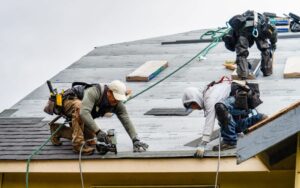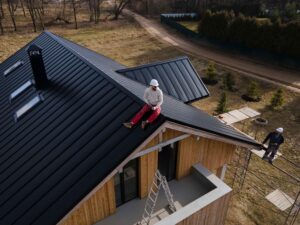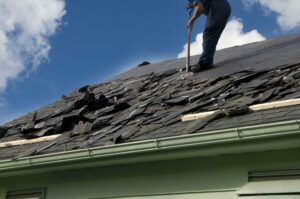When inspecting a roof, you’ll want to start from the ground, looking for any fallen shingles or debris that might signal problems. Using binoculars, scan the roof’s surface for moss, algae, or any damaged shingles, like curling or cracking. Don’t overlook the gutters and soffits, as clogs or deterioration can lead to bigger issues. Understanding these details is essential, but there’s much more to take into account to guarantee a thorough assessment.
Why Regular Roof Inspections Are Important
While it’s easy to overlook your roof, regular inspections are essential to maintaining its integrity and preventing costly damage. By walking around your property, you can spot fallen shingles or debris, which indicates potential issues. Look for damaged shingles—loose, curled, or cracked—as these can allow water seepage and lead to significant leaks. Check your gutters, fascia, and soffit for clogs or damage that hinders water drainage. Don’t forget to examine flashings around chimneys and vents; signs of wear can compromise water resistance. Finally, inspect your attic or crawlspace for any water damage or rot, as these can signal underlying roof problems. If you notice any significant issues or feel uncertain about your inspection, it’s best to consult a professional roofing contractor to assess the condition and recommend appropriate repairs. Addressing these issues promptly can save you from expensive repairs down the line.
Essential Tools Needed for Roof Inspection
To effectively inspect your roof, you’ll need a few essential tools that streamline the process and guarantee thoroughness. Start with a pair of binoculars to examine hard-to-reach areas, spotting moss and debris from ground level. A flashlight is vital for illuminating dark spaces in the attic or crawlspace, helping you identify water damage or rot. Use a sturdy ladder for direct access, ensuring it’s stable and secure before climbing. A moisture meter can accurately detect hidden dampness in wood, while a tape measure helps you assess shingle wear. Finally, a notepad and camera are invaluable for documenting findings, allowing you to track issues over time or share them with a professional for further evaluation.
What to Look for During a Roof Inspection
A thorough roof inspection requires a keen eye for detail and a systematic approach to identifying potential issues. Start by walking around the entire property, noting any fallen shingles or debris. Use binoculars to spot moss, algae, or other debris on the roof, as trapped moisture can lead to significant problems. Next, look for damaged shingles—check for curling, cracking, or buckling that could allow water seepage. Inspect gutters, fascia, and soffit for clogs or damage, ensuring proper drainage. Don’t overlook flashings around chimneys and vents; signs of wear can indicate vulnerabilities. Finally, examine the attic for rotting wood or gaps, especially around vents and skylights, as these areas are critical for maintaining roof integrity.
Identifying Signs of Water Damage or Leaks
Identifying signs of water damage or leaks is essential for maintaining the integrity of your roof, and there are several key areas to inspect. Walk around your property to check for fallen shingles or debris, as trapped moisture can lead to damage. Use binoculars to spot moss or algae on the roof’s surface. Examine shingles for loose, curled, or cracked conditions, which can allow water seepage. Inspect gutters, fascia, and soffits for damage or clogs, noting any gravel-like granules that indicate wear. Don’t overlook flashings around chimneys and vents for signs of rust or damage. Finally, examine your attic for rotting wood or moisture, as these can signal deeper issues requiring immediate attention.
Roof Inspection Safety Tips
Inspecting a roof for signs of damage is only part of the process; safety during your inspection is equally important. Always wear appropriate safety gear, including a hard hat, slip-resistant shoes, and a harness if you’re climbing onto the roof. Before ascending, inspect your ladder for stability and make certain it’s positioned on solid ground. Avoid walking on wet surfaces, as they can be slippery. When examining the roof, use binoculars to assess high areas, reducing the need to climb. Check for overhead power lines before setting up your ladder. If you notice significant damage or feel uncertain, consult a professional to avoid potential hazards. Prioritize your safety to guarantee a thorough and secure inspection.
Frequency of Roof Inspections
Regular roof inspections should be conducted at least twice a year, ideally in the spring and fall. This schedule allows you to catch potential issues before they escalate. During your inspection, walk around the entire property to check for fallen shingles or debris. Utilize binoculars to inspect the roof’s surface for signs of moss, leaves, or algae, as trapped moisture can lead to significant water damage. Pay close attention to shingles; look for curling, cracking, or buckling that could permit water seepage. Also, examine gutters, fascia, and soffits for clogs or deterioration. Finally, inspect the attic for signs of water damage or rot. If you notice irregularities, consult a roofing professional to determine necessary repairs or replacements.
Frequently Asked Questions
How Can I Tell if My Roof Needs Immediate Repair?
You should look for missing shingles, leaks, sagging areas, or excessive granule loss. Inspect flashing around chimneys and vents, and check for water stains on ceilings. If issues arise, consult a professional immediately.
What Are the Different Types of Roofing Materials to Inspect?
When inspecting roofing materials, you’ll want to examine asphalt shingles, metal sheets, tiles, and membranes. Each type has unique characteristics and vulnerabilities, requiring a methodical assessment to guarantee structural integrity and longevity of your roof.
How Does Weather Affect Roof Inspection Results?
Weather greatly impacts roof inspection results; rain can obscure damage, while excessive heat may cause materials to expand, masking underlying issues. Conducting inspections during ideal conditions guarantees accurate assessments and identifies potential problems effectively.
Can I Perform a Roof Inspection Myself?
You can perform a roof inspection yourself, but make certain you’re equipped with safety gear. Methodically examine for damaged shingles, leaks, and debris. Document findings and consult professionals for any significant issues needing expert attention.
What Should I Do if I Find Damage During Inspection?
If you find damage during your inspection, document it thoroughly with photos, assess the extent, and prioritize repairs. Contact a licensed contractor to evaluate the situation further and recommend appropriate solutions tailored to your roof’s needs.




